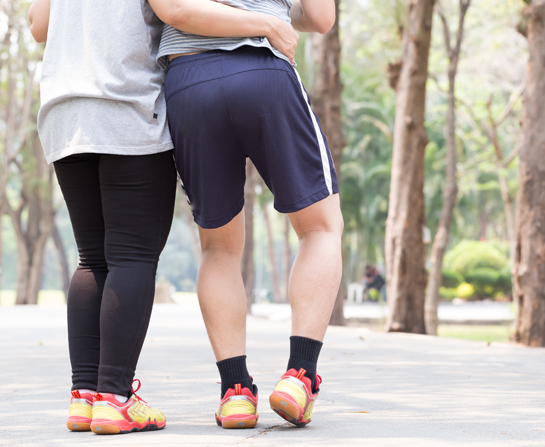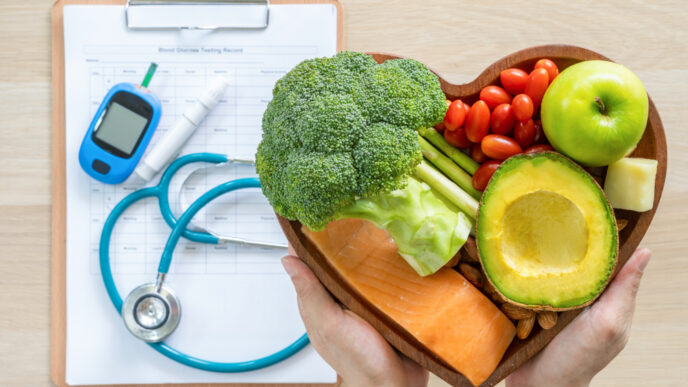Arghh! Muscle cramp is killing me!
April 27, 2022 Return

WORDS DR AU YONG PUI SAN
Sports Medicine Physician
For the third article in our series on sports injuries, a sports medicine physician explains about muscle cramps caused by exercise and ways of overcoming them.
Muscle cramp is a strong and painful contraction, often interpreted as sudden and severe spasms or tightening of a muscle that last anywhere from a few seconds to a few minutes.
Exercise-associated muscle cramps (EAMC) happen during physical activities. Let’s take a look at the WHYs, HOWs (how does it happen and how to prevent it) and WHATs (what to do when it is happening to me) of EAMC.
Why does EAMC happen?
Traditionally, it was thought and it is still popular opinion that muscle cramps during physical activities occur due to dehydration as a result of not drinking enough water, and also exercising in environments that are too warm and humid causing profuse sweating. Excessive sweating leads to deficiency of electrolytes such as sodium, potassium and magnesium. Other causes of muscle cramps include inadequate amount of stretching and muscle fatigue.
People have been believing the theory of electrolyte deficiency being the leading cause of EAMC. So, electrolyte replacement supplements and drinks have taken off significantly in the endurance sporting scene.
However, personal opinions from individual users on whether or not electrolyte replacement supplements and drinks work vary greatly. Some users swear by them, but some claim they are an absolute waste of money. Data from published researches also vary – most findings point to little or no effects of electrolyte replacement on reduction in muscle cramping.
In fact, in recent years many studies have debunked the theory of electrolyte deficiency being the leading cause of EAMC and showed that there is no correlation among EAMC, sodium intake and low blood sodium levels. Sodium is the most common electrolyte to be supplemented.
Also, if you read the sports drinks labels properly, you will notice that the amount of electrolytes present in most popular brands of sports drinks are miniscule and negligible, with the main component of the drink actually being carbohydrate in the form of SUGAR.
When it comes to dehydration, that theory may not hold that much weight as excessive and improper rehydration during prolonged endurance events possibly lead to hyponatraemia, which means low sodium in blood. It happens when people drink too much water too fast resulting in a dilution effect. The term exercise-associated hyponatraemia was first coined in the 1980s and has detrimental effects to the body which ultimately if not treated early, can lead to death. Now the guideline recommends to “drink according to thirst”.
How about the theory of inadequate stretching causing cramps?
Often mid endurance events, when someone suddenly seizes up with a very bad muscle cramp of the leg, the first thing that comes to mind is to stretch that muscle. And anyone who has experienced it will know that stretching the spastic muscle is extremely painful and at that point in time feels like a pointless procedure. But physiologically, the advice to stretch holds a lot of weight.
Keeping the anatomy and physiology lesson short and simple, there are two components in our muscles called muscle spindles and Golgi tendon organs (GTO).
Muscle spindles lie within the fleshy bulk of our muscles and they function to detect the lengthening or stretching of the muscle. When it detects the muscle being stretched, it will send a signal to the brain to prevent further stretching of the muscle. This prevents the muscle from being overstretched hence, preventing muscle tear and damage.
The GTO on the other hand lies at the border where the muscle meets the tendon – all muscles join to become tendons before attaching to a bone – and functions as such: when the muscle contracts forcefully or spastically, such as in a muscle cramp, the muscle tugs at the GTO and the GTO dutifully sends a signal to the brain to tell the spastic muscle to relax.
Therefore, when EAMC occurs, stretching of the affected muscle causes the GTO to send signals to the brain to cause the cramp to stop, for that muscle to relax and release, while the muscle spindle prevents you from overstretching and further hurting yourself. Thus, stretching DOES indeed help to reduce the occurrence of EAMC – or any muscle cramps for that matter – and halts the EAMC when it is already happening.
In recent years, many researchers started hypothesizing that the cause of EAMC is from the central nervous system. Central nervous system is a combination of the brain, the nerve fibres and endings, and the muscles that the nerve supplies. In fact, the altered neuromuscular control theory is taking more weight in the efforts of narrowing down the causes of EAMC and factors such as muscle fatigue, inadequate muscle conditioning and training and muscle damage/injury all fall into this theory.
From my experience of treating patients on the race course and also in retrospective history taking of patients who suffer from EAMC, they all tend to have a few things in common:
1) Inadequate conditioning/strengthening of the muscles – poorly conditioned muscles tend to be weaker, fatigue easily and quickly, and unable to take the rigours of sporting activities. The stronger and more conditioned the muscle is, the more resistant it is to cramps.
2) Inadequate training specificity – not to be confused with inadequate strength, as some of these athletes have good musculature due to regular exercise. However, SPECIFIC training for a particular sport or activity is important as different sports require the use of different muscle groups and different energy systems, to name a few. If you plan to participate in a road running race, training to run more is important.
3) Overtraining/muscle damage or injury – inadequate rest and recovery from overzealous training will lead to overtraining, which may lead to a certain degree of muscle or tendon damage or injury. Injured muscles do fatigue easily and may not withstand activities being participated in.
What can be done to reduce the incidences of EAMC?
Proper and adequate training is important. If you signed up for a half marathon, then train to run the distance and put in adequate time and mileage. Showing up at the start of a half marathon – or whatever distance – without any training may result in a very painful limp towards the tail end of the race due to bad cramps.
Stretching is important and highly recommended as an integral part of one’s training regime. If you feel a cramp is about to happen mid activities, it is advisable to take some time to stretch before continuing.
Rest is equally as important as the training itself. The more intense and often you train, the more rest and recovery is necessary. Injured and damaged muscles become tired easily and cramp more often.
Despite the lack of evidence supporting electrolyte supplementation and replacement drinks, if they work for you from past experiences, you should continue to take it.
On the note of altered neuromuscular control theory, there has been recommendation of consuming pickle juice instead of electrolyte drinks to prevent and even cure EAMC. The exact mechanism of how that works is still unclear and current research studies available out there did not come to any conclusive answer as to why it works. It has been hypothesized that the vinegar content in pickle juice triggers some muscular reflexes when the juice comes into contact with the back of the throat. This same reflex shuts down the misfiring of neurons in muscles thus causing cessation of EAMC. As it can be a cheaper alternative, no harm in giving that a try. On that same note, the idea of any liquid drink with vinegar in it can be used in place of pickle juice; for example, apple cider vinegar, kombucha, kimchi juice, etc.
Note: I take diluted apple cider vinegar before and during my long runs. HT
If you like this article, do subscribe here.







